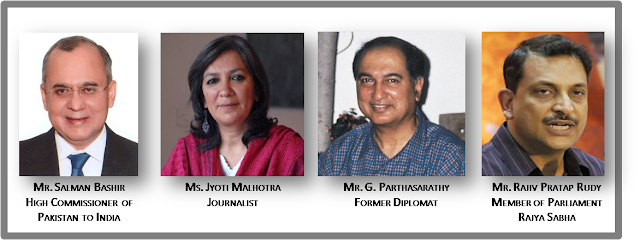Panelists:
Mr. Kanwal Sibal - Former Foreign Secretary
Dr. Bibek Debroy - Indian Economist
Mr. Surjit Bhalla - Chairman, Oxus Investments
Ms. Smriti Irani - Member of Parliament, Rajya Sabha
Mr. Sitaram Yechury - Indian Politician, Communist Party of India
Moderator:
Ms. Shereen Bhan - Delhi Bureau Chief & Executive Editor, CNBC TV18
India witnessed a paradigm change in its economic growth during the decade of 2000, with an average growth rate of 7.2 percent, the highest growth in the last five decades. Among other factors, this was enabled by the big bang reforms of the 1990s that not only addressed the key economic issues at the time but also underlined its strong political leadership. Since then, several articles have been published crediting India’s strong leadership for their contribution to the Indian economy. Thus, given the current economic slowdown, when India is projected to record a decade’s low growth of 5 percent in FY13, the Indian leadership is expected to tread the same path. More so, because India has the potential to grow at over 9 percent given its large working age population, high domestic demand (rising urban class and untapped rural markets) and low cost of production. However, a wide wedge has been created between this potential rate and its current growth rate owing to a host of domestic and external factors.
Ironically, India’s political leadership that has been credited till now for introducing the Big Bang reforms and placing the economy on a higher growth pedestal is now being criticized for its policy inaction, resulting in an economic slowdown. The divided opinion on reforms and lack of strong leadership has only postponed implementation of crucial growth supporting measures.
This is evident from long-stalled bills such as the Land Acquisition Bill, the Companies Bill, the Banking Bill etc. that are awaiting Parliamentary approvals. Likewise, there are several other crucial policy measures that are either on the sidelines for lack of consensus on future action (such as the Labour reforms) or for lack of implementation [the Goods and Service Tax (GST), the Direct Tax Code (DTC)]. This is not all. Even the World Bank in its 'Doing Business in India' study has placed the country among the last of ranks on several key parameters. Of the 185 countries under study, India has been ranked at 184th position for its effectiveness in enforcing contracts, at 182nd position for its effectiveness in dealing with construction permits and at 173rd position for starting a business. For a foreign entity considering venturing in the Indian market, these ranks may act as deterrents instead of facilitators. Even worse is the government neglect on these parameters.
Thus, poor leadership, economic slowdown and a deteriorating fiscal deficit position, led to a credit rating downgrade for India (to BBB-) by Standard & Poor’s in 2012. Though the Government of India (GoI) did announce some policy measures in September and October 2012, these have been only piecemeal with short-term effects, while the threat of a further downgrade to junk investment grade still looms. Thus, the GoI is required to announce some effective and far reaching measures for placing India on a 9 percent plus growth trajectory. It implies that a hike in fuel prices or relaxation in FDI caps or ban on exports of some commodities should not be rolled back due to opposition from concerned stakeholders. Besides, the central government may draw some learning lessons from the state government of Gujarat that has strongly positioned itself as a leading investment destination in India through its pro-active policy support.
To sum it up, the issue lies not in democratic leadership but in lack of strong leadership.




